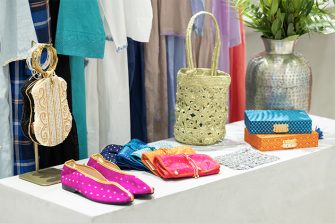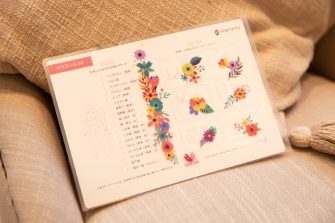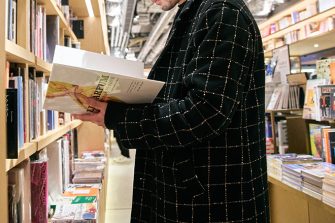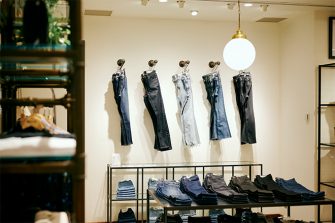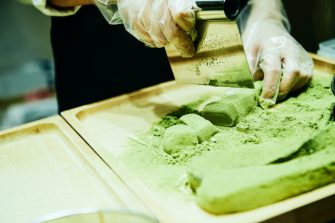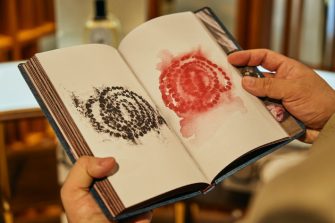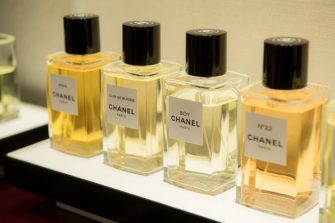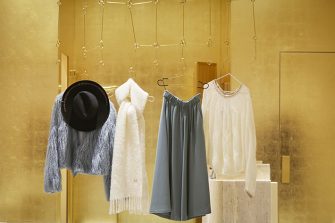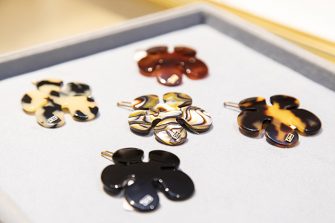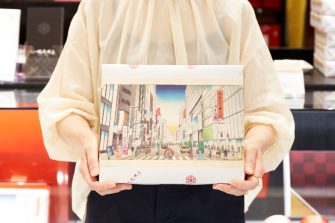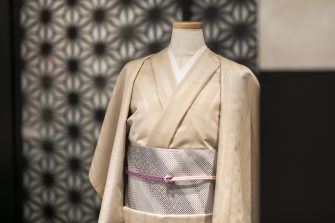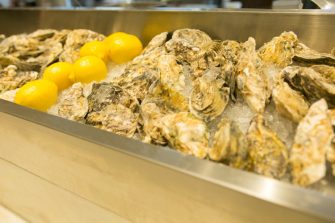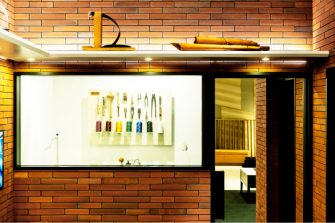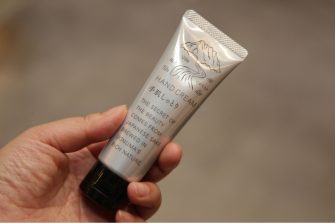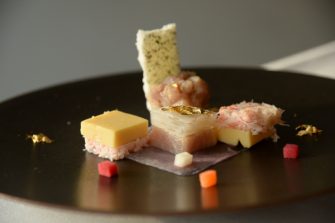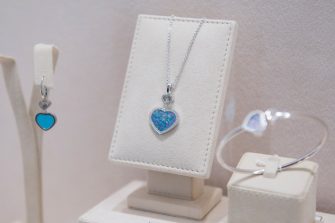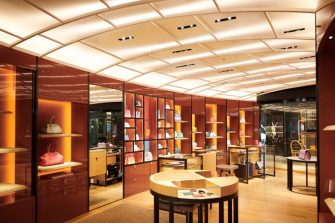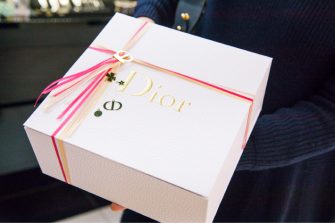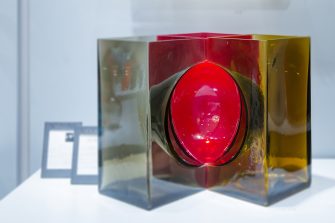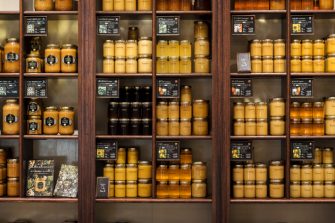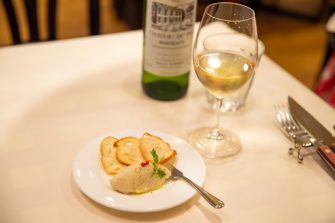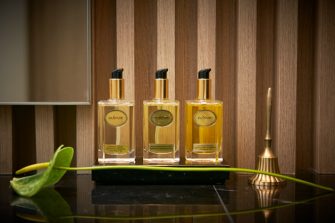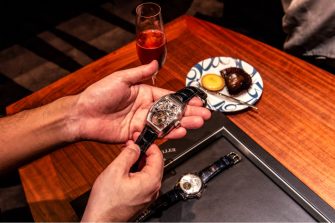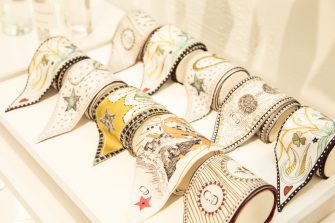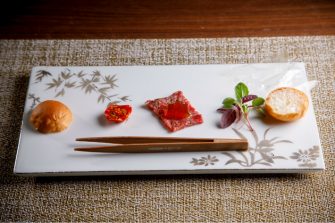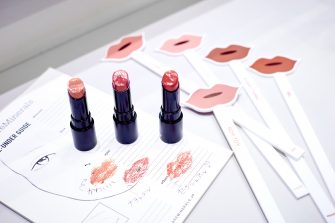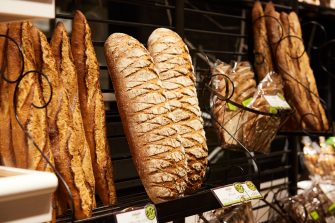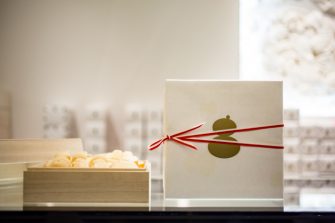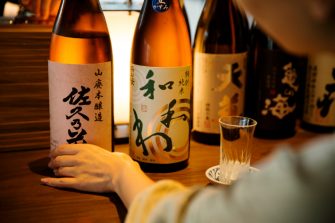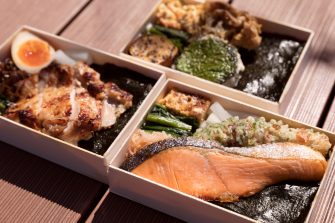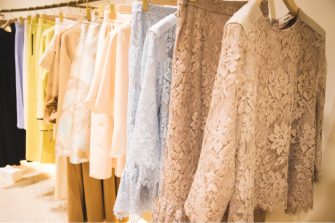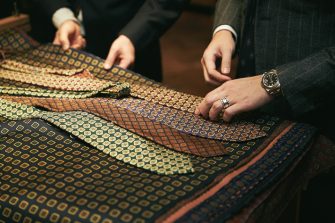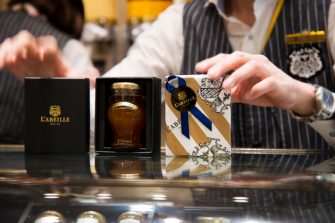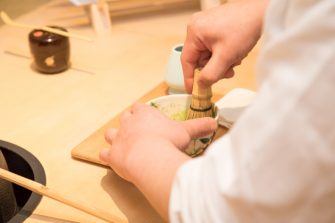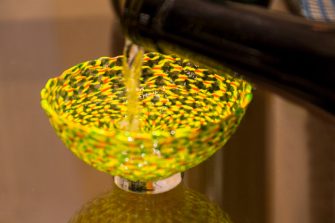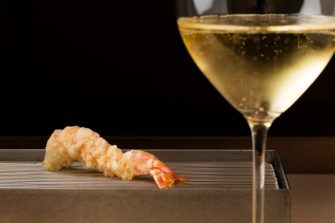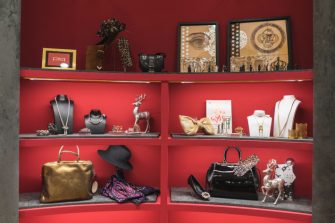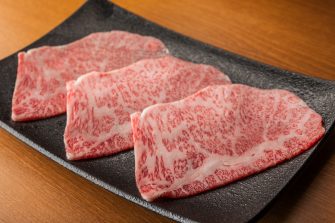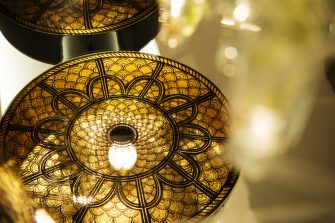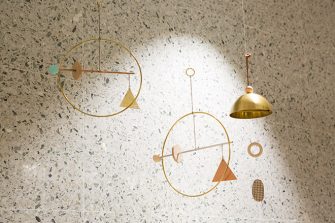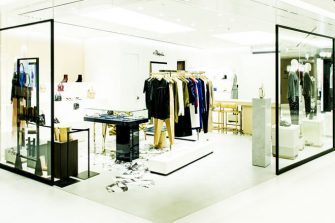

GINZA SIX EDITORS
ファッション、ジュエリー&ウォッチ、ライフスタイル、ビューティ、フード…
各ジャンルに精通する個性豊かなエディターたちが、GINZA SIXをぶらぶらと
歩いて見つけた楽しみ方を綴ります。
万人に開かれ、姿勢を高く保つ街の「アート」の矜持 Pride in art: A district of lofty standards, yet open to all
住吉 智恵
GINZA SIX EDITORS Vol.66
私が子どもの頃、家族にとってデパートといえば銀座松坂屋だった。80年代には母が8丁目に小さな店を開き、27年に渉り女手で営んできた。90年代に自分が美術に関わる仕事に就いてからは、ギャラリーが点在するアートの「現場」になった。目抜き通りの華やぎと、慣れ親しんだ場所の親密さが同居する特別な街、それが銀座だ。
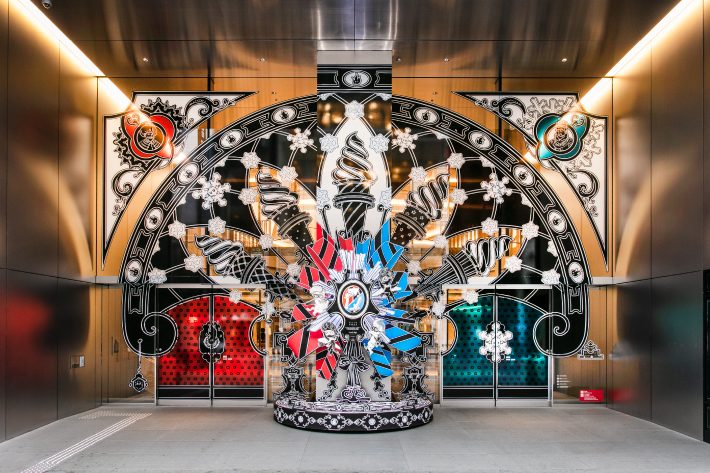

GINZA SIXには「銀座」が凝縮されている。吹抜けを覗き込めばスークのように軒を並べる店に高揚した声がさざめき、取り囲むフロアの階層はオペラ座のバルコニーを彷彿させる。そして館内各所に設置されたパブリックアートやギャラリーの小空間は、ふと立ち止まり思索する時間を与えてくれる。
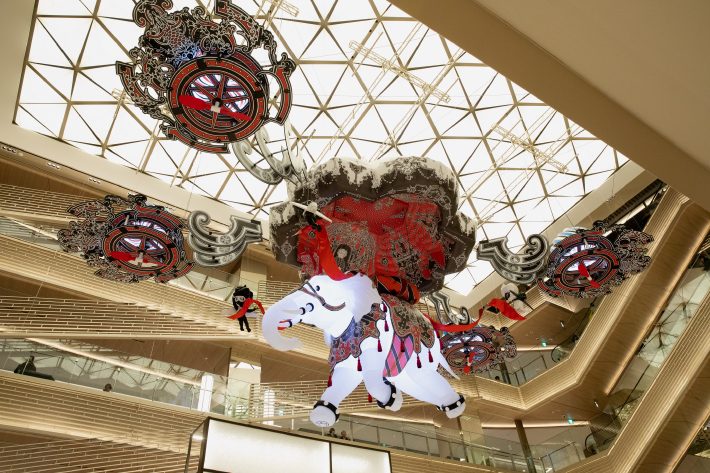
この秋から冬にかけて、日本を拠点とするフランス出身のアーティスト、ニコラ・ビュフが、中央吹抜けのインスタレーションをはじめとする全館のアートワークを手がけた。タイトルは『Fantastic Gift~「冬の王国」と「夏の王国」の物語~』。高さ約3m、全長約4mのバルーンの象が、小さな天使プッティの操るドローンに導かれ、灼熱の「夏の王国」から氷に閉ざされた「冬の王国」に向う。
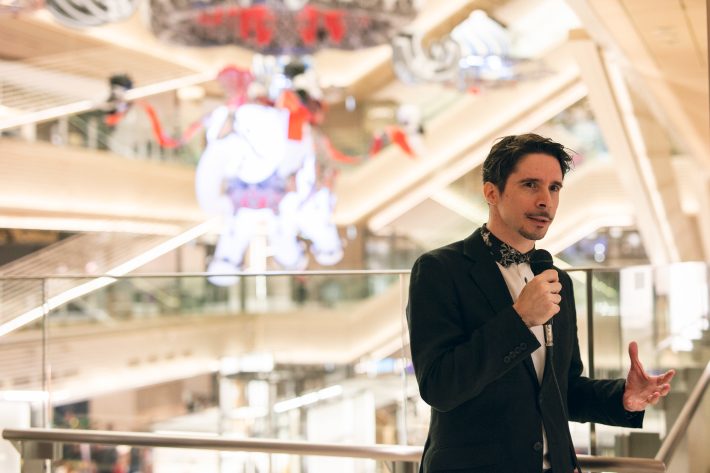
ニコラ・ビュフは1978 年パリ生まれ。ヨーロッパの中世やルネサンス、バロックの伝統的な装飾美術や文学をベースに、自身が幼少期に影響を受けた日本のアニメやアメリカのサブカルチャーを融合した物語世界をつくりあげてきた。古典芸術に対する深い知識と肌身で体得した造形センスが、彼の作品に説得性を与えている。「Serio Ludere(真剣に遊ぶ)」をコンセプトとする彼が本作でモチーフに選んだのは「地球の気候変動」である。
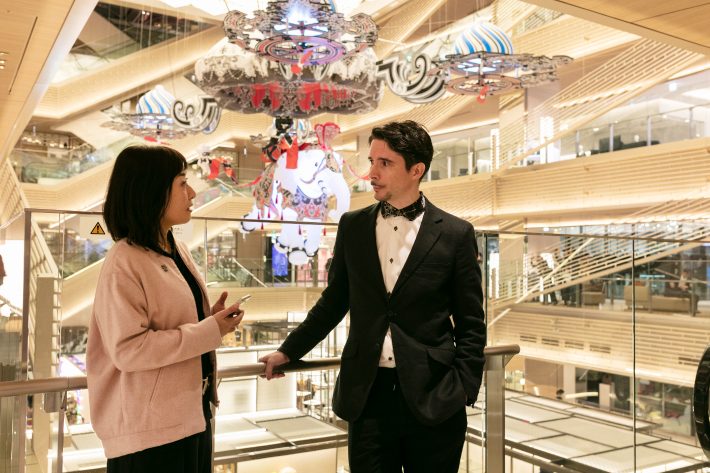
「この夏とても暑かった時季に物語のレイヤーを思いついたんです。怒りっぽくわがままな夏の王国の王子と、引き蘢りで冷たい冬の王国の王女に、問題を解決するための贈り物をするとしたら? 知のシンボルであるオベリスクを運ぶ象のアイデアは、イタリア・ルネサンス期に出版された挿絵入りの本『ポリフィーロの夢』からヒントを得ました。もちろん背景には、ヨーロッパとアジアを結ぶ外交の歴史と、現代の国際社会へのカリカチュアも含まれています」とニコラ。
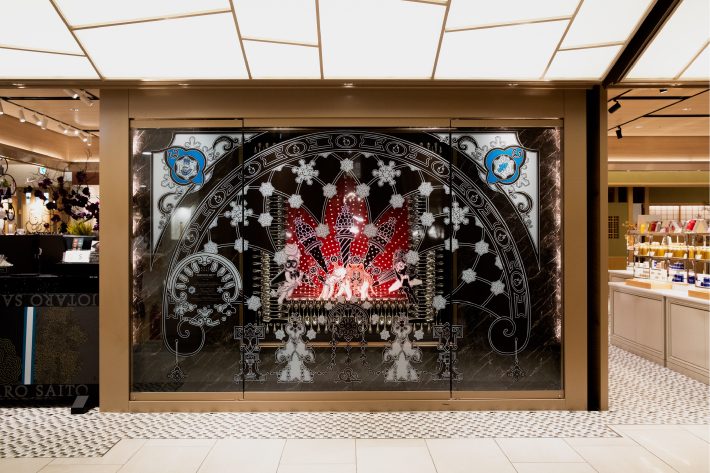
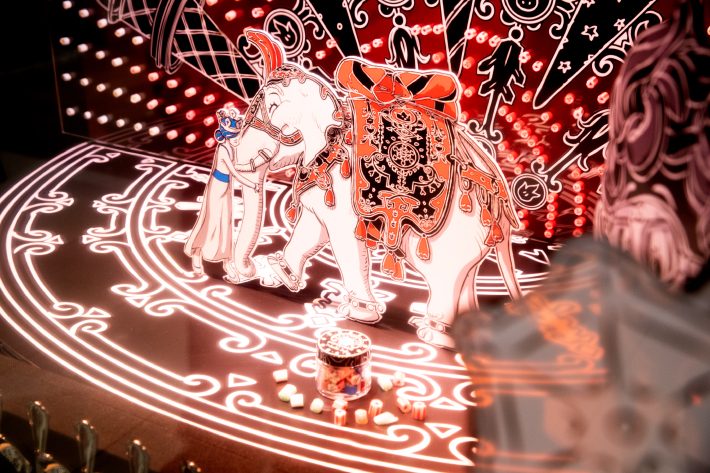
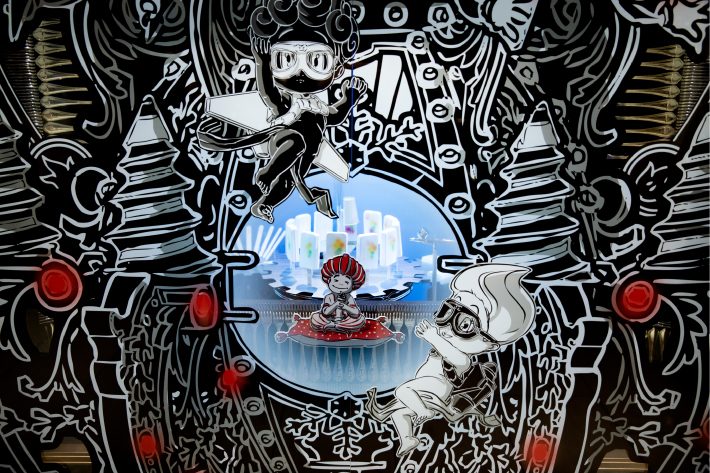
誰にでもアクセスできるファンタジーの形式をとりつつ、世界の構図を象徴する文明批評的なアプローチがこのインスタレーションに複雑なレイヤーを与えている。
このほか、銀座通りに面したメインエントランス(このコラム冒頭の写真2枚)やB2Fショーウィンドウでも、彼の作品世界に出合えるので、館内を散策してみたい。

一方、GINZA SIX館内にいくつものパブリックアートが常設されているのをご存知だろうか。
たとえば南エレベーターホールには、国内外でのダイナミックな活動で注目される大巻伸嗣の彫刻作品がある。江戸時代に発令された「奢侈禁止令」に対抗して、職人たちが技を競い、洗練させたというシックな江戸小紋柄を施した花と蝶は、銀座の職人文化の心意気を代弁し、モダンな銀座の服飾史を象徴する。
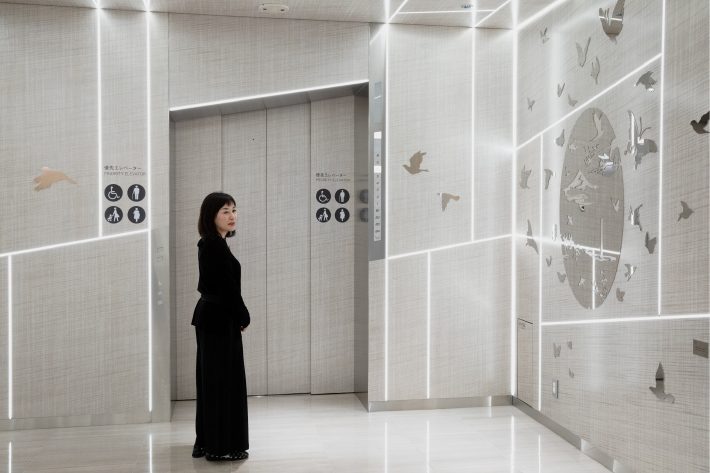
北エレベーターホールには、船井美佐が「楽園と境界」をテーマにミラーを使って構成した作品がある。本作の前に立つと、鏡の断片に自身の姿も映り込む。奥行のある鏡の世界で、理想と現実が刻々と反転・交錯する「楽園」の主役となったような気分を味わえるかもしれない。
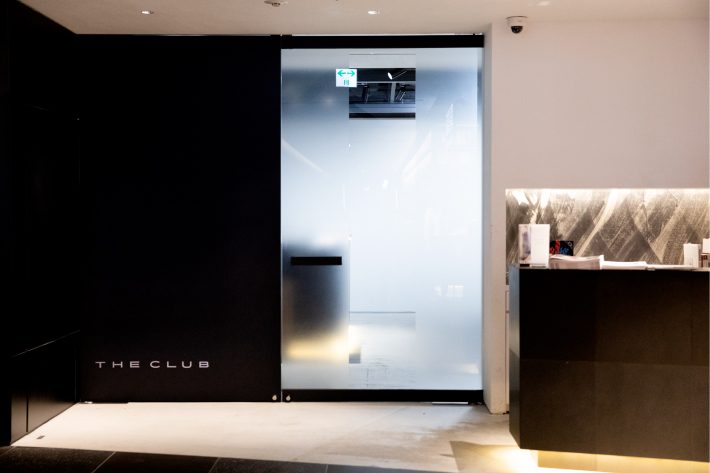
また、館内に数軒のギャラリーが独自に出店しているのも銀座らしい。
なかでも銀座蔦屋書店のなかにある若いギャラリーTHE CLUBに注目している。ロンドンのサザビーズで研鑽を積んだディレクター・山下有佳子が采配するこのスペースでは、日本で紹介されていない新旧のコンテンポラリー・アーティストを丁寧にすくいあげるキュレーションが展開される。2018年12月1日から1月31日までは、ロンドンを拠点に活躍する若手アーティスト猪瀬直哉の初個展「Blue」が開催される。過去に20th DOMANI・明日展に選出され、国立新美術館でも展示歴がある注目の作家だ。

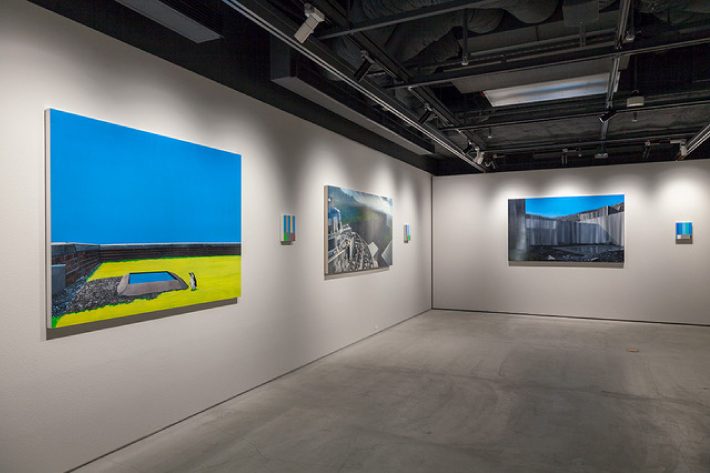
「THE CLUB」という会員制倶楽部のような名前と謎めいた乳白色のガラスの扉にクローズドな印象をもつが、銀座の画廊とははなから足を踏み入れにくいものである。ギャラリー名は1949年、戦後間もないニューヨークにオープンした8th Street Club、通称The Clubと呼ばれたギャラリーに由来する。当時、最先端のアーティストや文化人が集うHIPな場所であった「倶楽部」が銀座の地に甦り、欧米を中心とする現代美術のコンテクストに、アジアの視点で突破口を開いてくれることを期待したい。
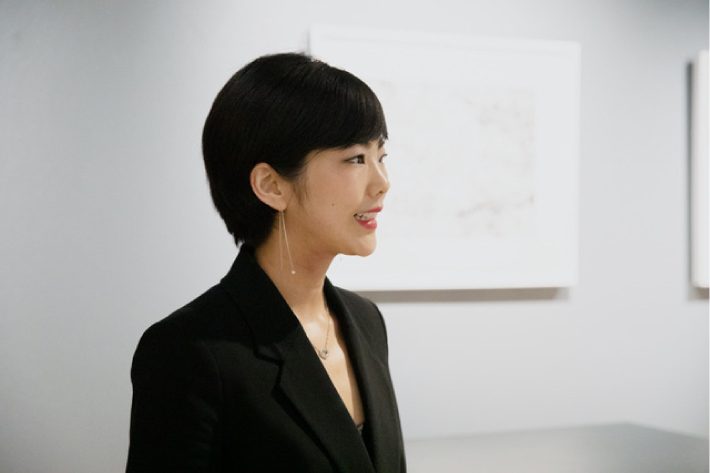
銀座は敷居の高い街だといわれてきた。できればこれからもそうあってほしい。
世界中の万人に開かれていながら、奥へと招き入れられるにはおのずと知性や美意識を磨かざるを得ないような「姿勢を高く保つ」街並こそ、いま日本(東京)に必要だと思うからだ。
銀座が標榜し、人々を魅了してきたのは、まさにそのような「アート」の矜持ではないだろうか。
Text:Chie Sumiyoshi Photos:Sai, Jun Koike(Naoya Inose) Edit:Yuka Okada
Whenever my family mentioned the department store in my childhood, it always meant Ginza Matsuzakaya. Back in the 80s, Ginza was where my mother opened a little store in 8-chome and ran it herself for 27 years. Since I took a job in the art world in the 90s, Ginza has been my workplace, with galleries scattered here and there. For me, Ginza is a special place, a place where a bustling main street and intimate places I’ve known very well stand side by side.


GINZA SIX distills the essence of Ginza. Peering into the atrium, you see stores stand side by side, like a bazaar. The atmosphere is lively. The surrounding floors evoke the balconies of an opera house. The public art displays and little gallery spaces installed throughout the facility provide opportunities to stop for a moment and contemplate.

This autumn and winter, Nicolas Buffe, the Japan-based French artist, has mounted an atrium installation and various other artworks throughout the facility. The title of the exhibit is “Fantastic Gift: The Story of the Kingdom of Winter and the Kingdom of Summer.” A balloon measuring three meters high and four meters long, in the shape of an elephant, is lofted along by drone, steered by little angels called the Putti, away from the scorching heat of the Kingdom of Summer to the icy reaches of the Kingdom of Winter.

Born in Paris in 1978, Nicolas Buffe draws on traditional European decorative art and literature from the medieval, the Renaissance, and the Baroque periods. He also blends the childhood influences of Japanese anime and American subcultures to create story worlds. His in-depth knowledge of classical art and his skill at modeling, acquired through hands-on experiences, lend persuasiveness to his works. As the motif for this piece, in a spirit of serio ludere (serious play), he chose global climate change.

“I came up with the story layers during a really hot spell this summer,” he says. “The prince of the Kingdom of Summer is hot-tempered and selfish. The princess of the Kingdom of Winter is reclusive and cold-hearted. What possible gifts could resolve their problems? The idea of an elephant carrying an obelisk, a symbol of knowledge, came to me partly from Hypnerotomachia Poliphili (The Dream of Poliphilus), an illustrated book published during the Renaissance in Italy. In the background we see the history of diplomatic relations linking Europe and Asia and a caricature of modern international society.”



The approach, a fantasy format accessible to anyone, also functions as a critique of a civilization that illustrates how the world is linked and put together and gives this installation multiple layers.
You can see his works at the main entrance (two photographs at the beginning of this column) facing Ginza Street and in the B2F show window. They make a stroll around the facility worthwhile for any visitor.

Did you know a number of public artworks are on permanent display inside GINZA SIX?
In the South Elevator Hall, for example, there’s a sculpture by Shinji Ohmaki, who’s drawing attention for dynamic efforts both in Japan and overseas. In the Edo Period, the government issued an edict banning extravagance. Craftsmen responded by competing to refine their skills in producing sophisticated patterns known as Edo Komon. This forms the basis for the flowers and butterflies comprising the sculpture. Flowers and butterflies represent the spirit of the Ginza craftsman culture. They also symbolize the history of modern attire in Ginza.

In the North Elevator Hall, you’ll find a work by Misa Funai comprised of mirrors, whose theme is the Paradise/Boundary. Stand before the piece and you’ll see your own image reflected in the mirror fragments. This can inspire the sense that you stand in a world behind the mirrors, as the primary figure in a paradise of shifting interacting ideals and realities one after another.

In the spirit of Ginza, the facility also houses several galleries, each with their own exhibition. Of these, I’m interested in the THE CLUB, a young gallery located inside the Ginza Tsutaya Books. The space is managed by Director Yukako Yamashita, who gathered her expertise at Sotheby’s in London. Her curation painstakingly highlights the talents of contemporary artists, both old and new, whose work has yet to be exhibited in Japan. Between December 1, 2018 and January 31, the gallery will host Naoya Inose’s first solo exhibition, titled “Blue.” He is a young artist based in London who’s attracted considerable attention. His work has been selected for the 20th DOMANI Tomorrow Exhibition and displayed at the National Art Center, Tokyo.


The name THE CLUB conjures up visions of a private members’ club. Its mysterious milky white glass doors create a sense of a space closed off to outsiders. This is on top of the sense of anxiety Ginza art galleries typically inspire in those who dare enter. The name THE CLUB comes from the 8th Street Club (often simply referred to as “The Club”), which opened in New York in 1949, soon after the war. During those days, the word club came to denote a hip location where artists and others in the cultural vanguard gathered. I hope the version resurrected here in Ginza will prove as groundbreaking a source of an Asian perspective on the context of modern art, something with foundations in the West.

Ginza has long had a reputation for places that seem somewhat intimidating or closed to outsiders, and I hope an aspect of this will remain in place. I believe Japan (Tokyo) today needs places, dedicated to the loftiest standards, that still invite anyone to tackle the implicit challenge, places that naturally inspire a sense of responsibility to hone one’s intelligence and aesthetic sense.
People may very well look to Ginza precisely for this uncompromising advocacy of serious art.
Text:Chie Sumiyoshi Photos:Sai, Jun Koike (Naoya Inomata) Edit:Yuka Okada
住吉 智恵
アートプロデューサー、ライター。東京生まれ。慶応義塾大学文学部美学美術史学専攻卒業。1990年代よりアートジャーナリストとして活動。アートスペースTRAUMARIS主宰を経て、現在各所で展覧会やパフォーミングアーツの企画を手がける。バイリンガルのカルチャーレビューサイトRealTokyoディレクター。子育て世代のアーティストとオーディエンスを応援するプラットフォーム「ダンス保育園!! 実行委員会」代表。www.realtokyo.co.jp










